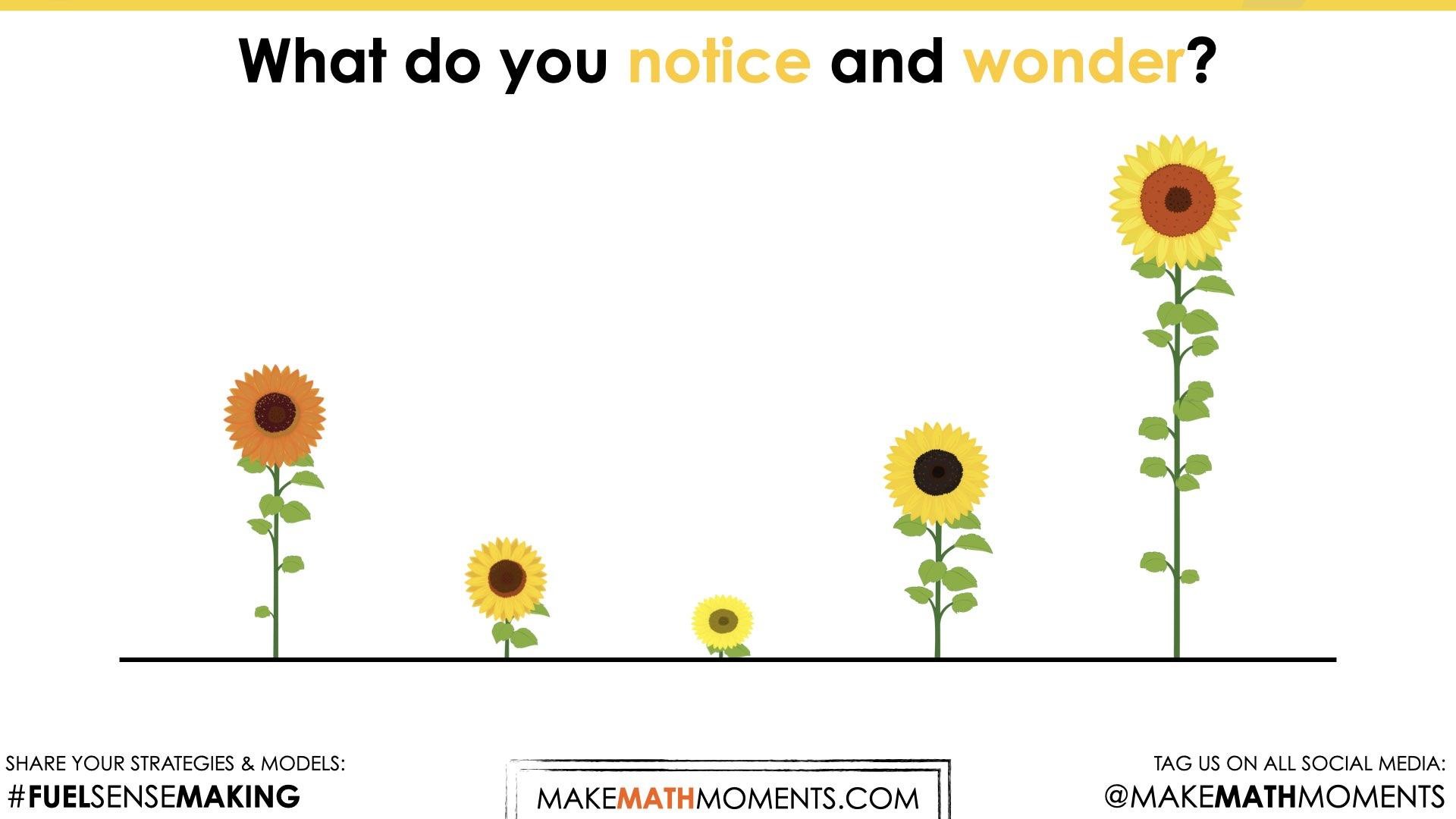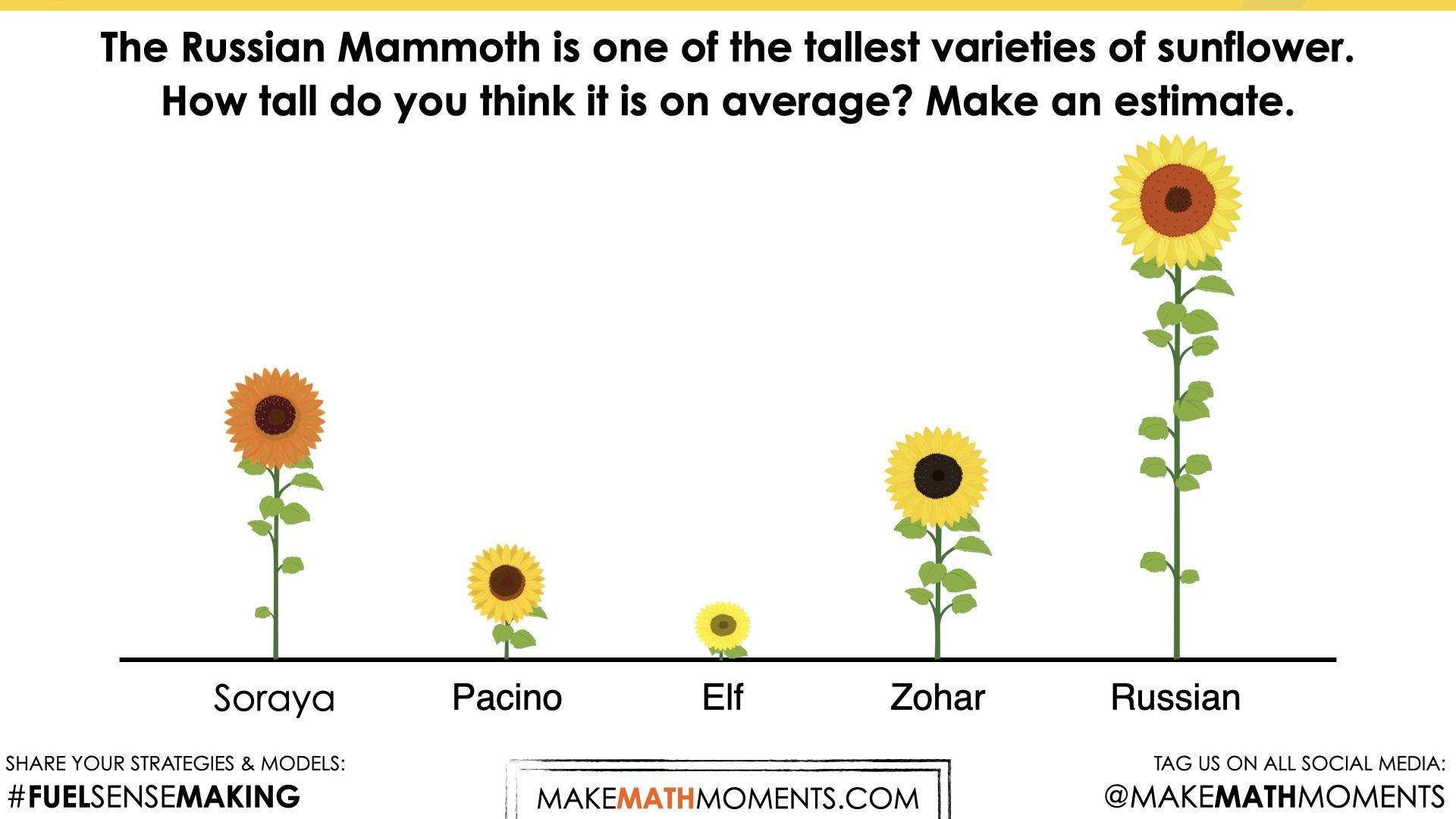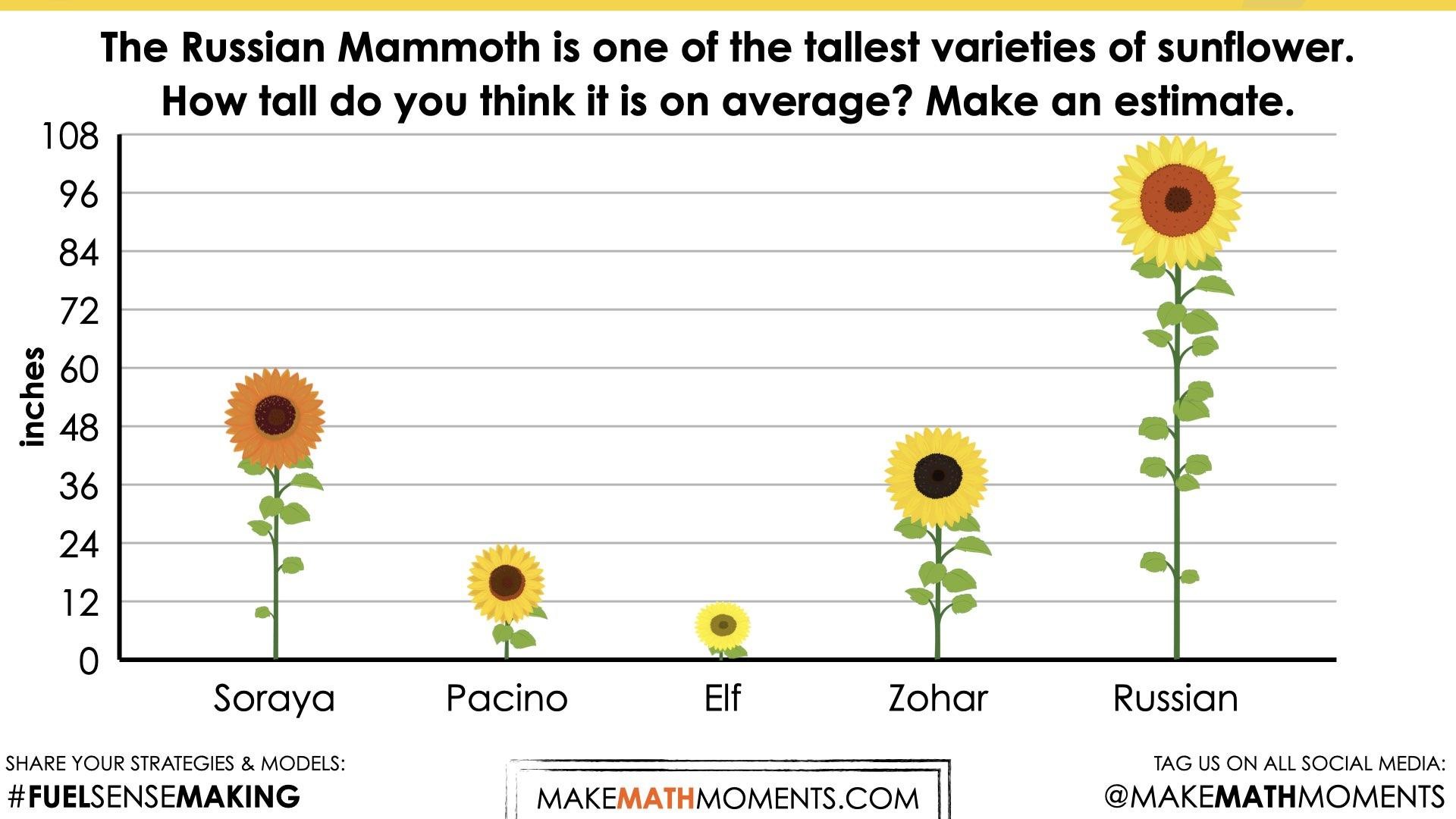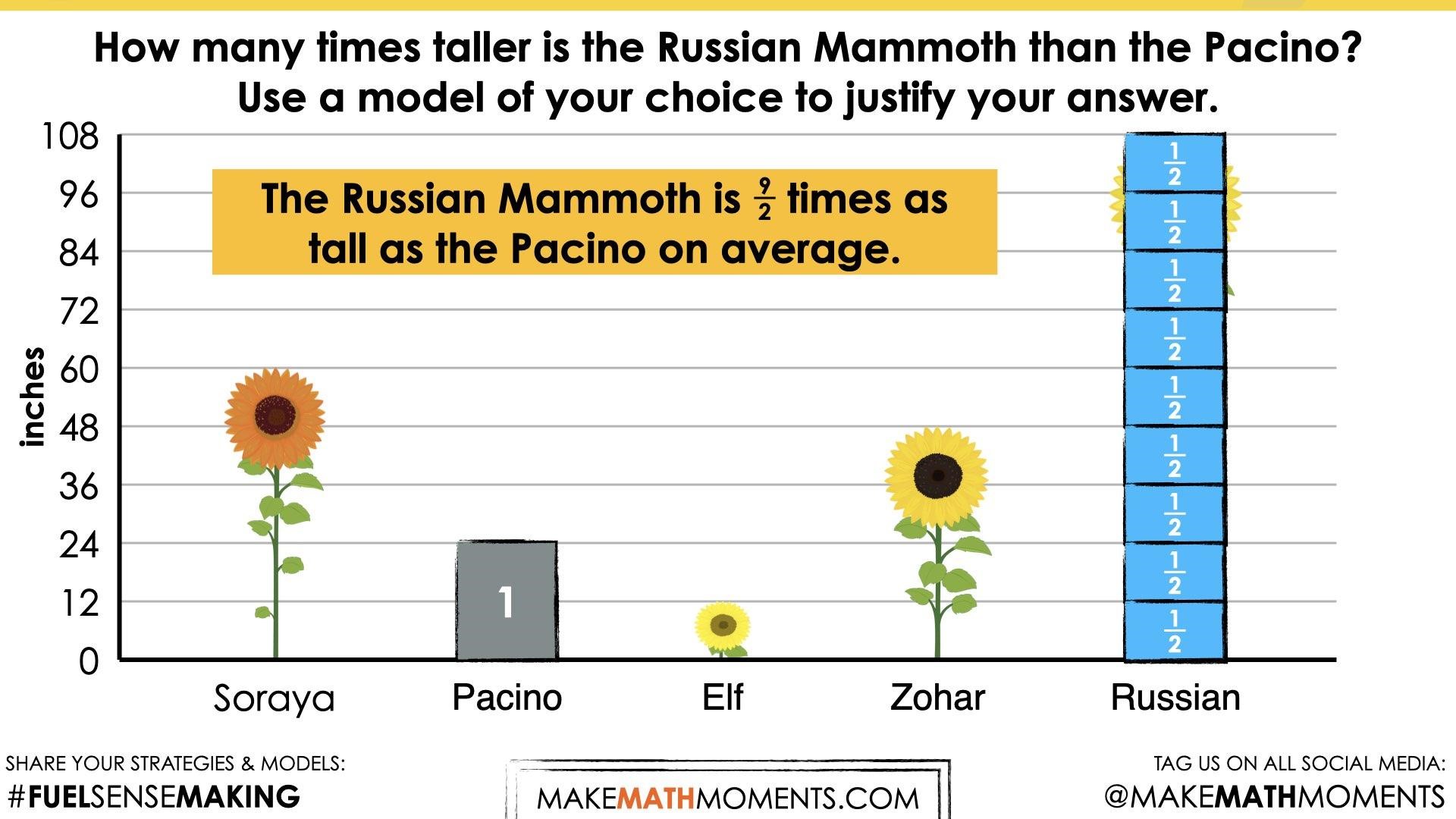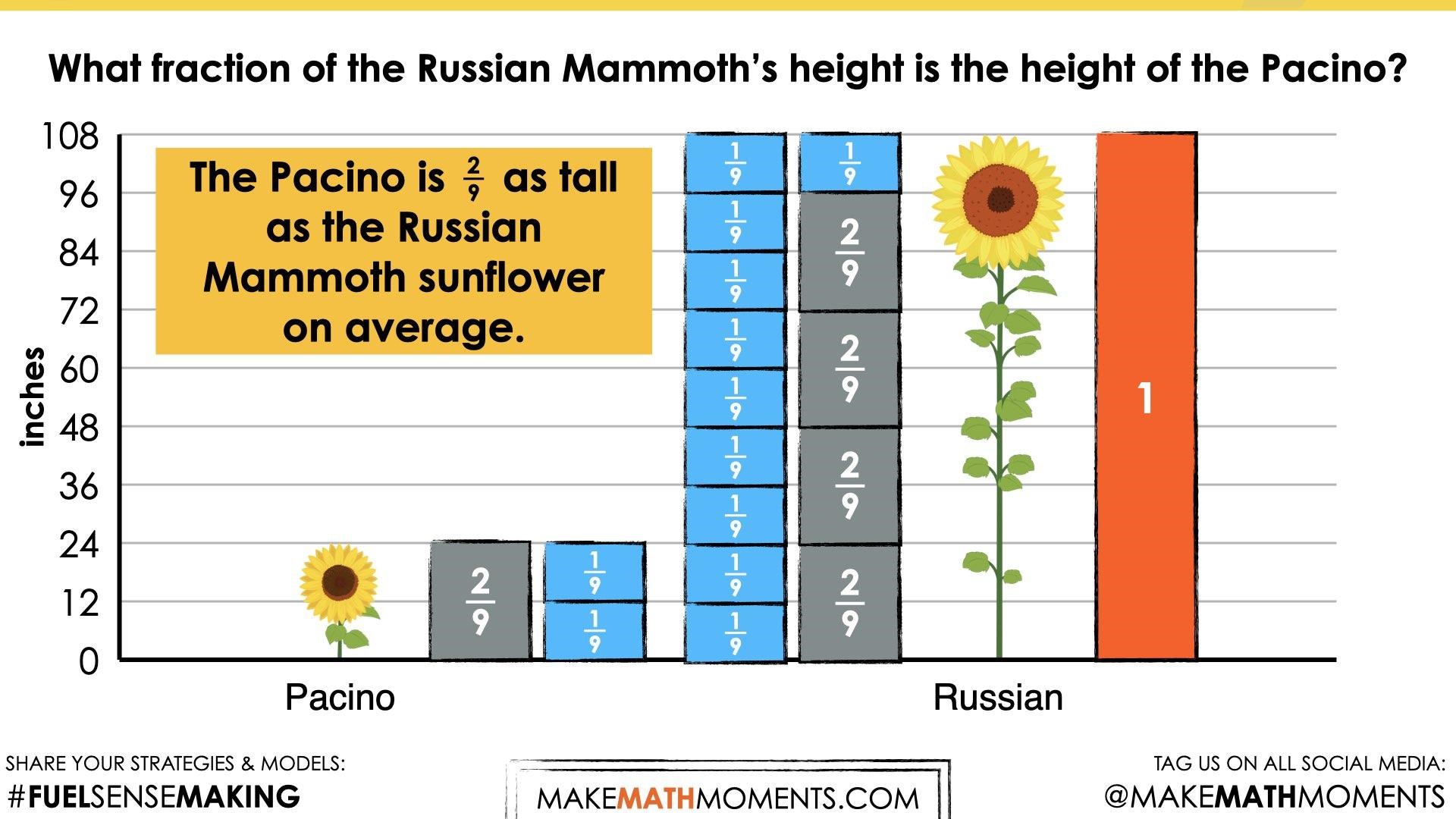PLANTING FLOWERS [DAY 3]
RATIOS AND RATES
Introduction to ratios and rates. Students will explore both types of ratios; composed units and multiplicative comparison. They will use partitive division to reveal a rate and quotative division to determine a scale factor.
Intentionality
Spark Curiosity
Fuel Sensemaking
During Moves
Student Approaches
Next Moves
Consolidation
Reflect and Consolidation Prompts
Resources & Downloads
Educator Discussion Area
Intentionality & Unit Overview
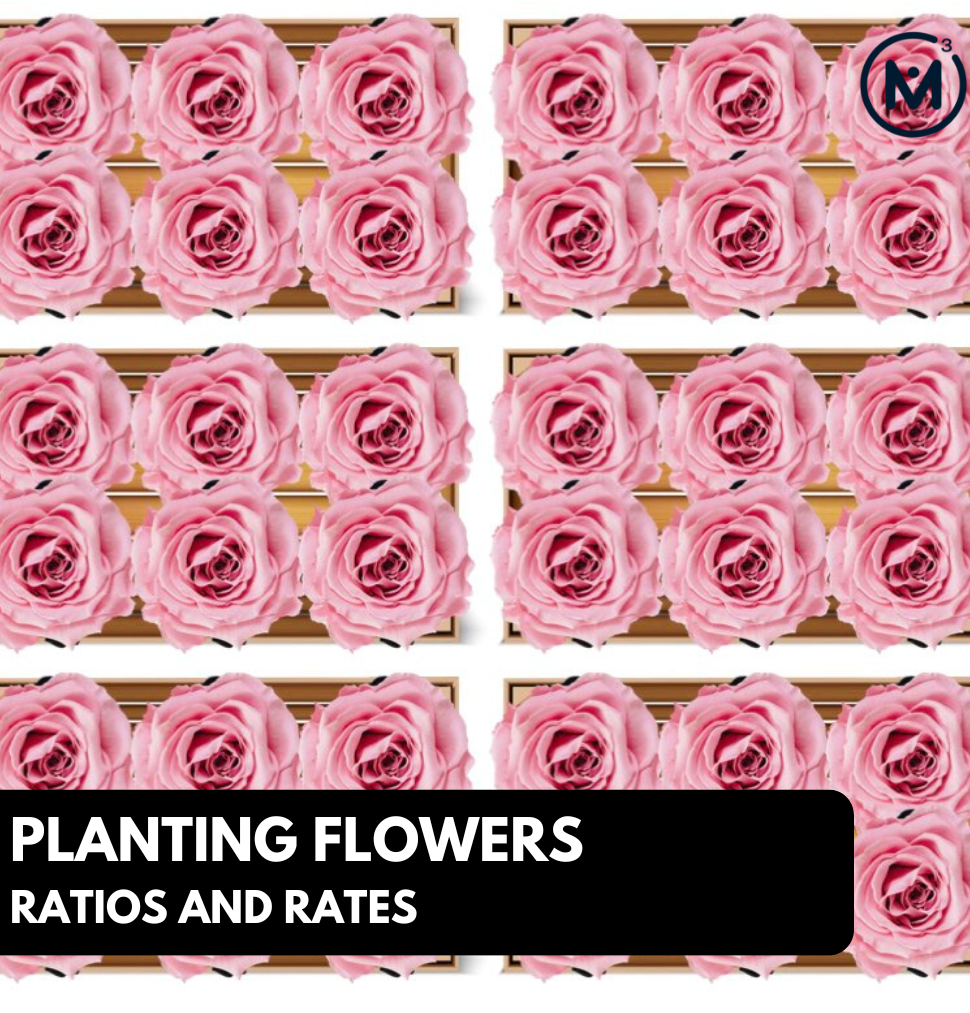
Length of Unit: 5 Days
Access each lesson from this unit using the navigation links below
Today students will compare the height of two varieties of sunflowers. Through quotative division, they will reveal how many times larger the Russian Mammoth sunflower is than the Pacino sunflower. This context will introduce a different type of ratio; a multiplicative comparison.
Intentionality…
In this task, students will determine how many times taller the Russian Mammoth sunflower is than the Pacino sunflower. The spark in today’s task will attempt to encourage students to leverage a linear model to compare the height of the two flowers. Through quotative division, students will be able to reveal a scale factor. The heights of the two sunflowers can be represented as a ratio with the same unit (inches and inches). This type of ratio is called a multiplicative comparison. Some of the big ideas that may emerge through today’s tasks include:
- There are two types of ratios; composed unit and multiplicative comparison;
- A multiplicative comparison is a ratio with the same unit;
- The scale factor between a multiplicative comparison can be revealed through quotative division.
Spark Curiosity
What Do You Notice? What Do You Wonder?
Show students the following video:
Then, ask students:
What do you notice?
What do you wonder?
Give students 60 seconds (or more) to do a rapid write on a piece of paper.
Replaying the video can be helpful here.
Then, ask students to share with their neighbours for another 60 seconds.
Finally, allow students to share with the entire group. Be sure to write down these noticings and wonderings on the blackboard/whiteboard, chart paper, or some other means to ensure students know that their voice is acknowledged and appreciated.
Some of the noticing and wondering that may come up includes:
- I notice sunflowers.
- I notice that they are all different heights.
- I notice that there is a really short one and a really tall one.
- I wonder how tall they are?
- I wonder why we’re looking at sunflowers?
Estimation: Prompt
After we have heard students and demonstrated that we value their voice, we can land on the first question we will challenge them with:
The Russian Mammoth is one of the tallest varieties of sunflower. How tall do you think it is on average?
Make an estimate.
We can now ask students to make an estimate (not a guess) as we want them to be as strategic as they can possibly be. This will force them to determine a height that would be reasonable before determining a more precise answer. Consider asking students to think about a measurement that would be “too low” and a measurement that would be “too high” before asking for their best estimate in order to help them come up with a more reasonable estimate. Encourage students to share their estimates
Please note: We did not specify a standard unit of measure for this estimate. Students may describe the height in feet, in inches, in metres, in centimetres, or relative to another non-standard unit. All units are welcome at this point.
Estimation: Reveal
Show the following video:
You could also share the estimation reveal by sharing this image:
Celebrate students whose estimates were closest to 108 inches. Since a variety of units may have been used, some conversions might be necessary in order to determine whose estimate was most accurate.
Fuel Sense-making
Crafting A Productive Struggle:
Login/Join to access the entire Teacher Guide, downloadable slide decks and printable handouts for this lesson and all problem based units.
During Moves
While Students Are Productively Struggling….
Login/Join to access the entire Teacher Guide, downloadable slide decks and printable handouts for this lesson and all problem based units.
Student Approaches
Student Approach #1: Counting Using Square Tiles as Units of Twelve
Login/Join to access the entire Teacher Guide, downloadable slide decks and printable handouts for this lesson and all problem based units.
Student Approach #2: Repeated Addition Using a Bar Model
Login/Join to access the entire Teacher Guide, downloadable slide decks and printable handouts for this lesson and all problem based units.
Student Approach #3: Scaling on a Number Line
Login/Join to access the entire Teacher Guide, downloadable slide decks and printable handouts for this lesson and all problem based units.
Next Moves
Reveal
Show students the following reveal video:
Alternatively, you could share the following reveal images. The first is a visual showing how many times taller the Russian Mammoth is than the Pacino sunflower on average:
The second image reveals what fraction of the Russian Mammoth’s height is the height of the Pacino:
Consolidation
Login/Join to access the entire Teacher Guide, downloadable slide decks and printable handouts for this lesson and all problem based units.
Reflect and Consolidation Prompts
Provide students an opportunity to reflect on their learning by offering these consolidation prompts to be completed independently.
Consolidation Prompt #1:
Login/Join to access the entire Teacher Guide, downloadable slide decks and printable handouts for this lesson and all problem based units.
Consolidation Prompt #1: Reveal Video
Login/Join to access the entire Teacher Guide, downloadable slide decks and printable handouts for this lesson and all problem based units.
Consolidation Prompt #2:
Login/Join to access the entire Teacher Guide, downloadable slide decks and printable handouts for this lesson and all problem based units.
Consolidation Prompt #2: Reveal Video
Login/Join to access the entire Teacher Guide, downloadable slide decks and printable handouts for this lesson and all problem based units.
Login/Join to access the entire Teacher Guide, downloadable slide decks and printable handouts for this lesson and all problem based units.
Consolidation Prompt #3: Reveal Video
Login/Join to access the entire Teacher Guide, downloadable slide decks and printable handouts for this lesson and all problem based units.
Consolidation Prompt #4:
Login/Join to access the entire Teacher Guide, downloadable slide decks and printable handouts for this lesson and all problem based units.
We suggest collecting this reflection as an additional opportunity to engage in the formative assessment process to inform next steps for individual students as well as how the whole class will proceed.
Resources & Downloads
Login/Join to access the entire Teacher Guide, downloadable slide decks and printable handouts for this lesson and all problem based units.
Printable Lesson Plan PDF
Videos, Images & Media Files
Apple Keynote Presentation
Powerpoint Presentation
Printable Consolidation Prompts
Educator Discussion Area
Login/Join to access the entire Teacher Guide, downloadable slide decks and printable handouts for this lesson and all problem based units.
Explore Our 60+ Problem Based Units
This Make Math Moments Lesson was designed to spark curiosity for a multi-day unit of study with built in purposeful practice, number talks and extensions to elicit and emerge strategies and mathematical models.
Dig into our other units of study and view by concept continuum, grade or topic!


